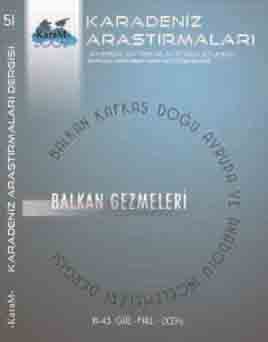18. ve 19. yy Polonya’sında Soylu Yaşantısı ve Kültürü (Adam Mickiewicz’in “Pan Tadeusz”u Bağlamında)
Noble Life and Culture in Poland During the 18th and 19th Centuries (Within the Context of ‘Pan Tadeusz’ of Adam Mickiewicz)
Author(s): Seyyal KörpeSubject(s): Studies of Literature, Cultural Anthropology / Ethnology, Culture and social structure , 18th Century, 19th Century
Published by: Karadeniz Araştırmaları Merkezi
Keywords: Mr. Tadeusz; Adam Mickiewicz; Lithuanin; nobility; customs;
Summary/Abstract: Poland which had been named by Ottoman Empire as Lehistan, occupying by his neighbours Austria, Russia and Prussia in the year of 1795 was completely deleted from the map of Europe. After the failure of November uprising, which was broke out under the leadership of a group of young officers from the Polish army, a process of migration which was named as “great migration” began in the country. A large number of soldiers, officers and intellectuals, refuging primarly Germany, and then France left the country. The renowned Polish poets such as Adam Mickiewicz, JuliuszSlowacki, Cyprian Kamil Norwid and Zygmunt Krasinski were included between the poets, who took part in this migration. This great poets of the Poland not only described their longing for home and the glorious history of the nation, but also underlined the national errors, which determined the fate of the country in their works. Pan Tadeusz or the last foray in Lithuania, which was writen between the years 1832-1834 by Adam Mickiewicz the national poet of Poland is one of the masterpiece of 19th. century Polish literature. The artist in his consisting of twelve parts work described a sense of longing for Lithuanian territory, where he had spent his childhood years, Lithuanin nature and Lithuanin beauty which he had recorded in his mind. The other issue which he handled in his this composition is the noble life and culture of the year of 1811. Pan Tadeusz in order to protect the national unity was writen primarily to remind the Polish people the necessity of conserve the elements of the noble culture, customs and traditions which are increasingly being lost. From this work can be obtained information about the way of spending time, hunting tradition, consumed food and drink names of aristocrats.
Journal: Karadeniz Araştırmaları
- Issue Year: 2016
- Issue No: 51
- Page Range: 129-148
- Page Count: 20
- Language: Turkish

